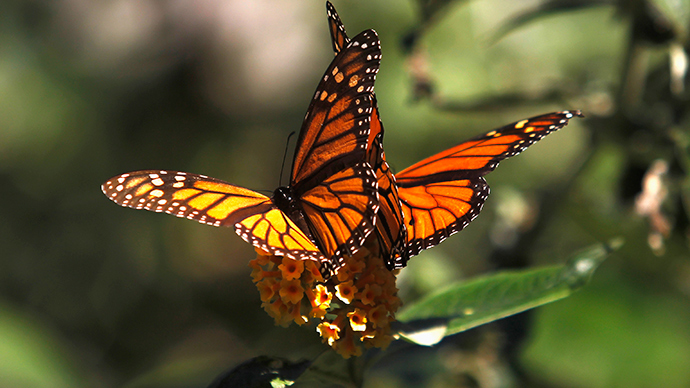… other than droning Monsanto.

Milkweed is the only place where monarch butterflies will lay their eggs. Photo credit: Wikimedia Commons
– How You Can Help Prevent Decline of Monarch Butterflies Due to Roundup-Ready Genetically Engineered Crops (EcoWatch, Oct 30, 2013):
Home gardeners can help offset the falling numbers of monarch butterflies due to herbicides and a new study shows U.S. citizens are willing to pay for it.
Milkweed—the only plant on which monarchs lay their eggs—is being eradicated by the herbicide glyphosate, which is sprayed on roadsides, pastures and fields where genetically modified, Roundup-ready corn and soy crops are grown, resulting in the loss of more than 80 million acres of monarch habitat in recent years, reports MonarchWatch.
The number of monarch butterflies has steadily dropped around 80 percent or more by some estimates in the past 15 years, barely recovering from the lowest plummet in 2009 to 2010. The good news is that home gardeners can help offset the threat simply by planting milkweed or building waystations to offset the loss of milkweed habitats.
Read moreHow You Can Help Prevent Decline Of Monarch Butterflies Due To Roundup-Ready Genetically Engineered Crops






